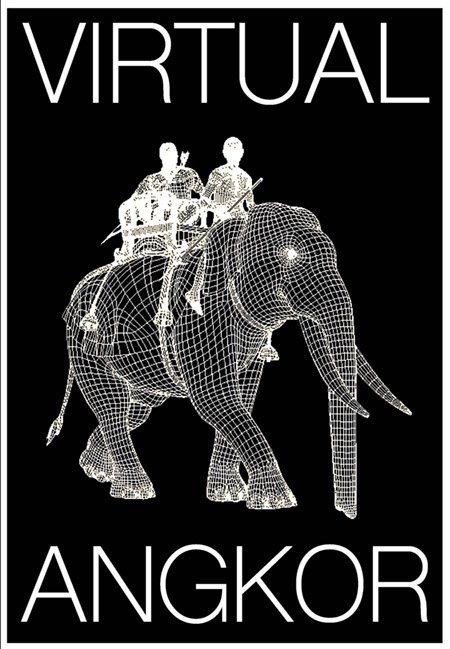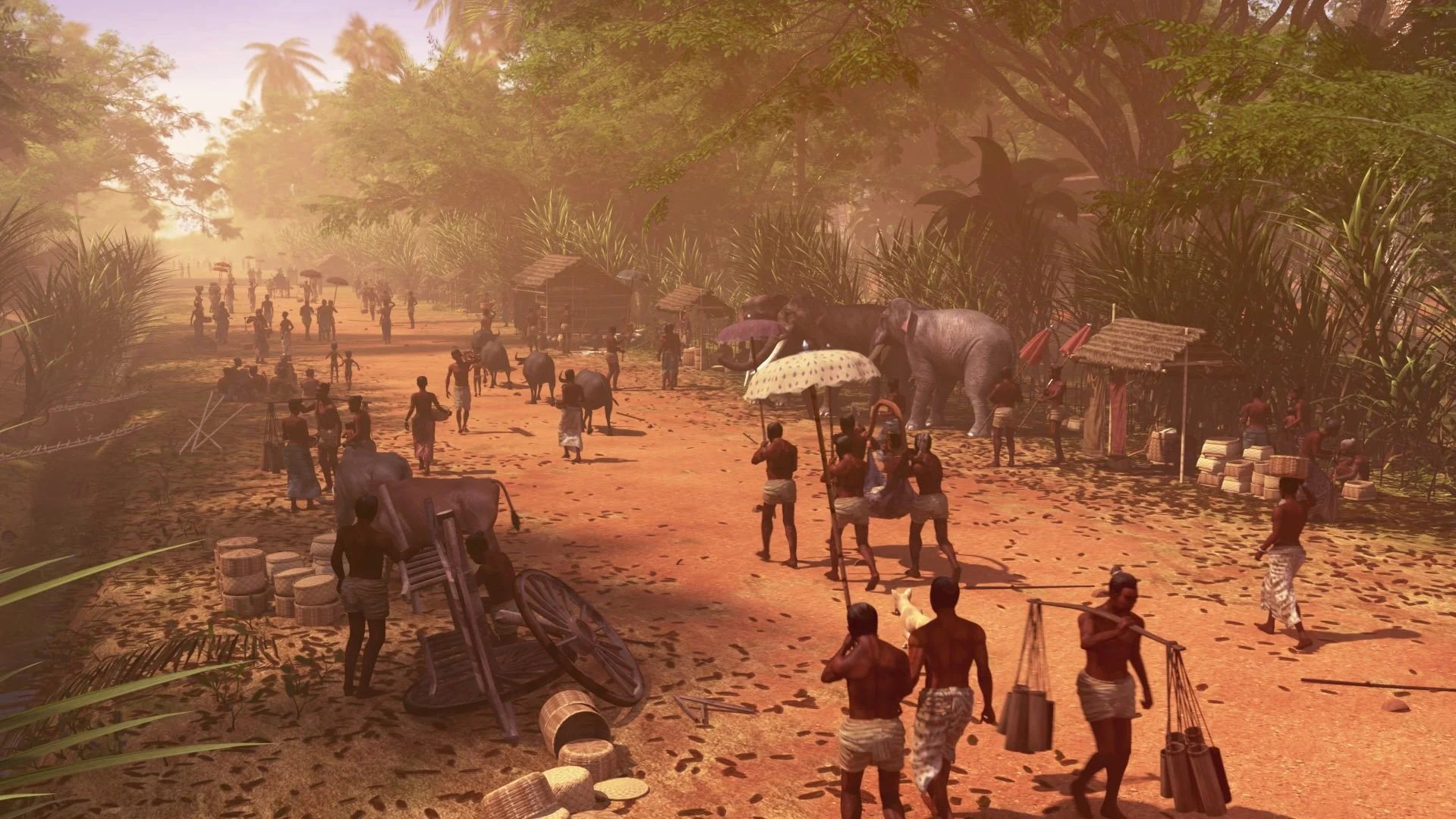Sources
Any reconstruction of Angkor starts from the limited source base which provides the historical scaffolding for the virtual project. These sources fit broadly into five categories. First, there are the Sanskrit and Old Khmer inscriptions, which offer a glimpse into the political, economic, and social life of city. Almost 1,300 Sanskrit and ancient Khmer inscriptions in stone have been found in territories that were once claimed by the Khmer empire. This body of inscriptions attests to the existence of an expansive corpus of scientific, educational, historical, epic, and religious literature (Jacques 2002), but the vast majority of the texts that once circulated on the perishable sheaves of the fan-palm leaf (Borassus flabellifer) no longer survive. Second, historians rely on European, especially French, accounts of nineteenth-century Cambodia. These include early sketches and photographs of the structures and the wider environment. Third, Angkor is famous for the remarkable bas-reliefs in the Bayon at Angkor Thom and at Angkor Wat itself, which provide detailed visual depictions. Fourth are the eyewitness accounts of Zhou Daguan, a Chinese official dispatched to Angkor in 1296 by the Temur Emperor, who produced an account of the city and its inhabitants. Finally, there is contemporary archaeological research on Angkor, including airborne surveys and the extensive mapping of Angkor carried out by the École français d’Extrême-Orient (French School of the Far East, EFEO) and the Greater Angkor Project. In addition to these five broad categories of sources, the project draws broadly on architectural surveys, botanical and palynological research, textile studies, and the work of ethnomusicologists.
Below are some of the key texts that we drew on to create the world of Virtual Angkor. They offer new discoveries and interpretations of the Kingdom of Angkor, and all are excellent references for further research for those interested in Angkorian civilization. Each teaching module also has its own self-contained bibliography.
Broad Overviews of Medieval Angkor
Chandler, David. A History of Cambodia, 4th Edition. Boulder: Westview Press, 2008.
The definitive general history book on Cambodia from ancient times to the 21st century written by the foremost scholar in the field.
Cœdès, George. Angkor: An Introduction. Hong Kong: Oxford University Press, 1963.
A historically significant account of Angkor as written by one of the leading French scholars of Southeast Asia of the 20th century.
Coe, Michael D. Angkor and the Khmer Civilization. London: Thames & Hudson, 2003.
A concise survey of Cambodian history from the beginning of recorded Khmer history to the expansion of French colonialism into Cambodia in the 18th century.
Fletcher, Roland, Damian Evans, Christophe Pottier, Chhay Rachna. “Angkor Wat: An Introduction.” Antiquity 89, no. 348 (2015): 1388-1401. https://doi.org/10.15184/aqy.2015.178.
A brilliant introduction to a special series of articles dedicated to exploring the latest developments in archaeological research on Angkor Wat and its surrounds.
Hendrickson, Mitch, Miriam T. Stark, and Damian Evans, eds. The Angkorian World. New York: Routledge, 2023.
Higham, Charles. The Civilization of Angkor. Berkley: University of California Press, 2004.
Mabbett, Ian William and David Chandler. The Khmers. Chiang Mai: Silkworm Books, 1996.
An authoritative monograph covering 2,000 years of the Khmer people and their culture as produced by the two greatest historians of ancient and modern Cambodian history.
Zhou Daguan. A Record of Cambodia, The Land and Its People. Translated by Peter Harris. Chiang Mai: Silkworm Books, 2007.
The latest and most accurate translation of the Chinese imperial envoy Zhou Daguan’s visit to Cambodia in the late 13th century.
Angkor, its Neighbours, and Trade
Carter, Alison, Laure Dussubieux, Martin Polkinghorne and Christophe Pottier, “Glass Artifacts at Angkor: Evidence for Exchange.” Archaeological and Anthropological Sciences (2017): 1-15.
Cremin, Aedeen. “Chinese Ceramics at Angkor.” Bulletin of the Indo-Pacific Prehistory Association 26 (2007): 121-123.
Harris, Peter. The Empire Looks South: Chinese Perceptions of Cambodia Before and During Angkor. Chiang Mai: Silkworm Books, 2023.
An important work showcasing the interactions between the Chinese and Angkorian Empires, featuring accounts from Zhou Daguan and more. Also includes a revised translation of Zhou Daguan’s Record of Cambodia.
Zhou Daguan. A Record of Cambodia, The Land and Its People. Translated by Peter Harris. Chiang Mai: Silkworm Books, 2007.
The latest and most accurate translation of the Chinese imperial envoy Zhou Daguan’s visit to Cambodia in the late 13th century.
Archaeology-Centered Texts
Carter, Alison, Miriam Stark, Cristina Cobo Castillo, Heng Piphal, Yijie Zhuang, and Chhay Rachna. “Prasat and Pteah: Habitation within Angkor Wat's temple enclosure.” Archaeological Research in Asia 23 no. 15 (2002): 100405. DOI:10.1016/j.ara.2022.100405.
Carter, Alison, Heng Piphal, Miriam Stark, et al. “Urbanism and Residential Patterning in Angkor.” Journal of Field Archaeology 43 no. 6 (2018): 1-15. DOI:10.1080/00934690.2018.1503034.
Cobo Castillo, Cristina, Alison K. Carter, Eleanor Kingwell-Hanham, et al. “The Khmer did not live by rice alone: Archaeobotanical investigations at Angkor Wat and Ta Prohm.” Archaeological Research in Asia 24 no. 2: 100213. DOI:10.1016/j.ara.2020.100213.
Evans, Damian, Christophe Pottier, Roland Fletcher, Scott Hensley, Ian Tapley, Anthony Milne and Michael Barbetti. “A Comprehensive Archaeological Map of the World’s Largest Preindustrial Settlement Complex at Angkor, Cambodia.” Proceedings of the National Academy of Sciences of the United States of America 104, no. 36 (2007): 14277-14282.
The most extensive exploration of the geography of Angkor, which was developed through a combination of decades of on-the-ground mapping surveys with cutting-edge remote-sensing technologies developed in conjunction with the Jet Propulsion Laboratory and NASA.
Evans, Damian H., Roland J. Fletcher, Christophe Pottier, Jean-Baptiste Chevance, Dominique Soutif, Boun Suy Tan, et al. “Uncovering Archaeological Landscapes at Angkor Using LiDAR.” Proceedings of the National Academy of Sciences 110, no. 31 (2013): 12595–12600. https://doi.org/10.1073/pnas.1306539110.
Fletcher, Roland, Daniel Penny, and the University of Sydney. Angkor Research Program.
Architecture-Centered Texts
Chandler, Tom and Martin Polkinghorne. “Through the Visualisation Lens: Temple Models and Simulated Context in a Virtual Angkor.” In Old Myths and New Approaches: Interpreting Religious Sites in Southeast Asia, 211–229. Edited by Alexandra Haendel. Clayton, Victoria: Monash University Publishing, 2012.
Evans, Damian, Christophe Pottier, Roland Fletcher, Scott Hensley, Ian Tapley, Anthony Milne and Michael Barbetti. “A Comprehensive Archaeological Map of the World’s Largest Preindustrial Settlement Complex at Angkor, Cambodia.” Proceedings of the National Academy of Sciences of the United States of America 104, no. 36 (2007): 14277-14282.
Stark, Miriam T., Damian Evans, Chhay Rachna, Heng Piphal, and Alison K. Carter. “Residential Patterning at Angkor Wat.” Antiquity 89, no. 348 (2015): 1439–1455. https://doi.org/10.15184/aqy.2015.159.
Environmental Histories
Acker, Robert. “New Geographical Tests of the Hydraulic Thesis at Angkor.” South East Asia Research 6, no. 1 (1998): 5–47. https://doi.org/10.1177/0967828X9800600103.
Buckley, Brendan M., Kevin J. Anchukaitis, Daniel Penny, Roland Fletcher, Edward R. Cook, Masaki Sano, Le Canh Nam, Aroonrut Wichienkeeo, Ton That Minh and Truong Mai Hong. “Climate as a contributing factor in the demise of Angkor, Cambodia.” Proceedings of the National Academy of the Sciences of the United States of America 107, no. 15 (2010): 6748-6752. https://doi.org/10.1073/pnas.0910827107
A detailed and fascinating scientific examination of the role played by climate change in the eventual collapse of Angkor and the Khmer Empire in the 13th century.
Carter, Alison K., Miriam T. Stark, Seth Quintus, Yijie Zhuang, Hong Wang, Piphal Heng, and Rachna Chhay. “Temple Occupation and the Tempo of Collapse at Angkor Wat, Cambodia.” Proceedings of the National Academy of Sciences 116, no. 25 (2019): 12226–12231. https://doi.org/10.1073/pnas.1821879116.
Evans, Damian. “Hydraulic Engineering at Angkor.” In Encyclopaedia of the History of Science, Technology, and Medicine in Non-Western Cultures (2014): 2215-2219.
Evans, Damian, and Roland Fletcher. “The Landscape of Angkor Wat Redefined.” Antiquity 89, no. 348 (2015): 1402–1419. https://doi.org/10.15184/aqy.2015.157.
Feneley, Marnie, Dan Penny, Roland Fletcher, “Claiming the Hydraulic Network of Angkor with Viṣṇu: A multidisciplinary approach including the analysis of archaeological remains, digital modelling and radiocarbon dating: With evidence for a 12th century renovation of the West Mebon.” Journal of Archaeological Science: Reports, 9 (2016): 275-292.
Groslier, B.P. “The Angkorian Hydraulic City: Exploitation or Over-Exploitation of the Soil?” Translated by Terry Lustig and Cristophe Pottier, Bulletin de l'École Française d'Extrême Orient 66 (1979): 161-202.
Hawken, Scott. “Designs of Kings and Farmers: Landscape Systems of the Greater Angkor Urban Complex.” Asian Perspectives 5 no. 2 (2013): 347-367. DOI:10.1353/asi.2013.0010.
Klassen, Sarah, Alison K. Carter, Damian H. Evans, et al. “Diachronic Modeling of the Population within the Medieval Greater Angkor Region Settlement Complex.” Science Advances 7 no. 19 (2021): 8441-8448. DOI:10.1126/sciadv.abf8441.
Penny, Dan, Cameron Zachreson, Roland Fletcher, David Lau, Joseph T Lizier, Nicholas Fischer, Damian Evans, Christophe Pottier, Mikhail Prokopenko. “The Demise of Angkor: Systemic Vulnerability of Urban Infrastructure to Climatic Variations.” Sciences Advances 17 (2018).
Szabo, Ildiko. Kingfisher. London: Reaktion Books, 2009.
Uchida, Etsuo and Ichita Shimoda. “Quarries and Transportation Routes of Angkor Monument Sandstone Blocks.” Journal of Archaeological Science 40, no. 2 (2013): 1158-1164.
Digital Projects
Fletcher, Roland, Daniel Penny, and the University of Sydney. Angkor Research Program.
Wade, Geoff. Southeast Asia in the Ming Shi-lu: an open access resource. Singapore: Asia Research Institute and the Singapore E-Press, National University of Singapore.
Angkor in Fiction
Burgess, John. A Woman of Angkor. New York: River Books, 2013.
A critically-acclaimed historical fiction novel set in the courts and temples of 12th century Angkor.

